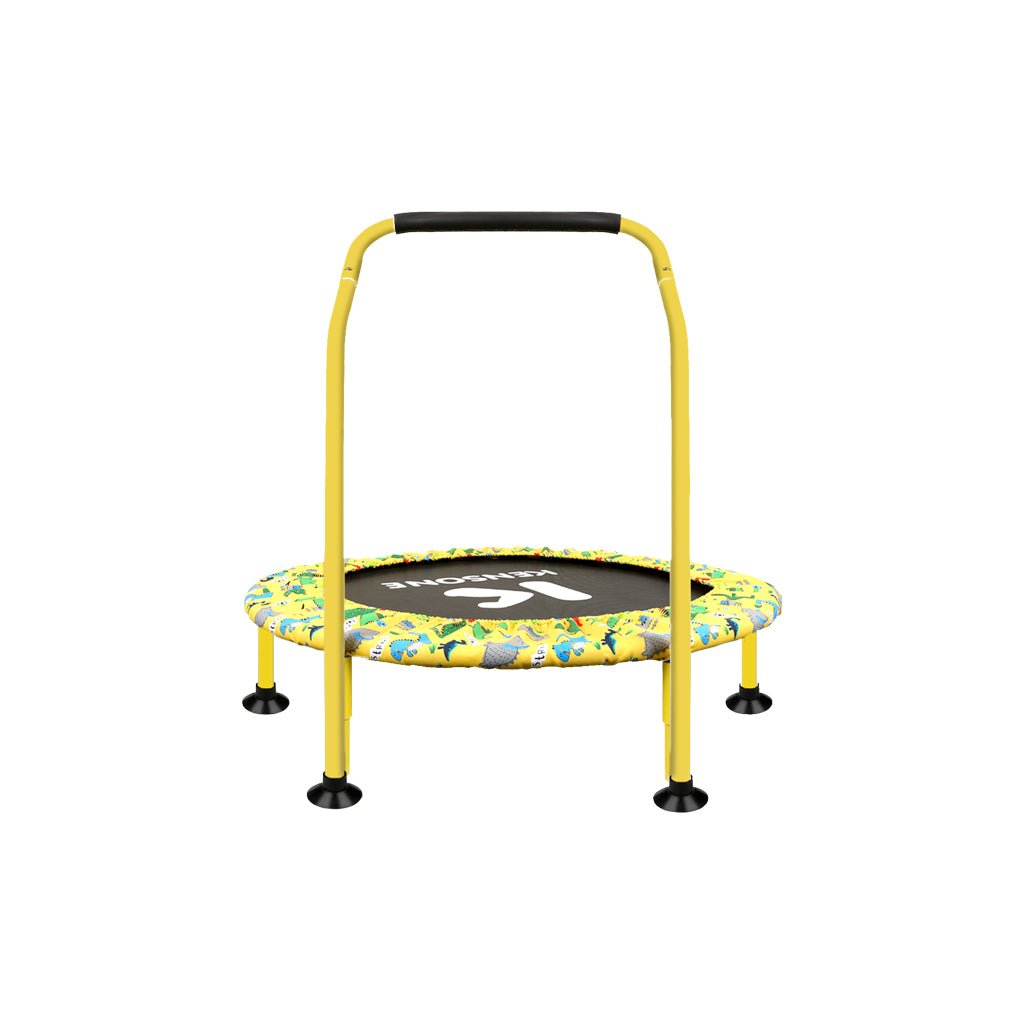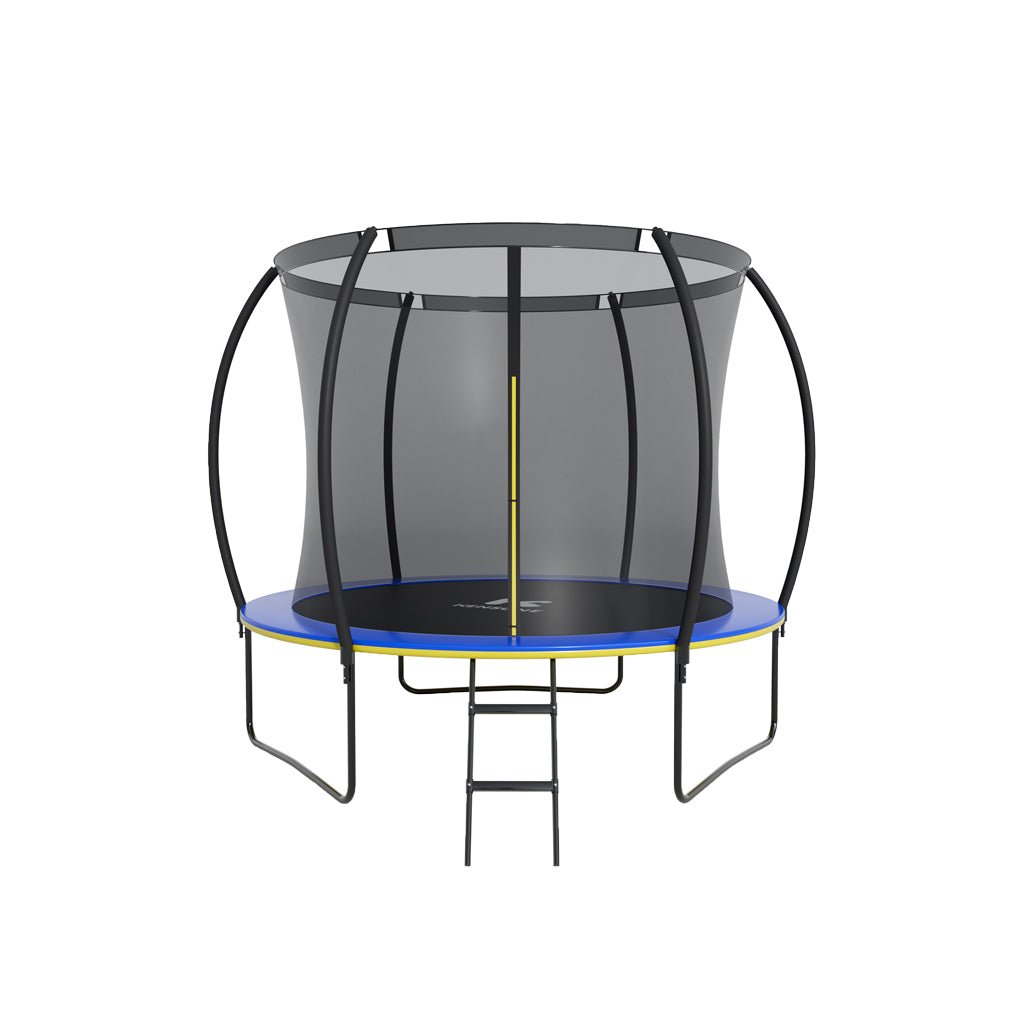Balance Training with Trampolines Can Improve Mobility for Stroke Patients
Research shows trampoline exercise can improve balance, mobility, and confidence for adult stroke patients. Learn how bouncing on a trampoline can supplement rehab to enhance strength, coordination, and cardiovascular health.
New research shows that doing balance exercises on a trampoline, also called rebound training, can significantly improve mobility and reduce fall risk for adult stroke patients. As a popular science writer, I wanted to break down this complex study into easily digestible information for the average reader. Here's what the research found about using trampolines to rehab after a stroke.
What the Study Found
The study, conducted by researchers in South Korea, looked at the effects of a 6 week modified trampoline training program on balance, walking ability, and confidence in avoiding falls among 24 stroke patients. The patients were divided into two groups:
- Trampoline Training Group: Did 30 minutes of trampoline exercises 3 times per week plus conventional physical therapy.
- Control Group: Only did conventional physical therapy
After 6 weeks, the trampoline group showed significant improvements compared to the control group in balance, mobility, walking ability, and fall confidence tests. The results suggest that adding structured trampoline training to traditional rehab can boost recovery for many important functions affected by stroke.
Overview of the Modified Trampoline Training Program
The researchers developed a customized trampoline training regime for the stroke patients to improve balance and strength:
- Standing exercises like weight shifting and tandem stance
- Bouncing in place through marching, jogging and jumping
- Stepping front to back and side to side
- Balance challenges like standing on one leg and tossing/catching objects
Participants started with easier activities, then progressed to more difficult balancing tasks over the 6 weeks. A physical therapist supervised each session and assisted patients as needed using a support handle.
Why Trampolines Can Benefit Stroke Rehab
Trampolines provide an unstable, bouncy surface that challenges balance and activates muscles throughout the body. Here are some of the key benefits trampoline training offers for stroke recovery:
- Proprioceptive Feedback - Bouncing challenges your sense of motion and body position, activating proprioceptors in your joints, tendons, and muscles. This heightened sensory feedback fine tunes motor control.
- Core and Leg Strength - The constant adjustment to imbalance engages and strengthens core stabilizer muscles, legs, and ankles. This can counter muscle weakness often seen after stroke.
- Weight Shifting Ability - Exercises like marching or jumping in place enhance dynamic balance skills like weight shifting, which are essential for walking and mobility.
- Cardiovascular Exercise - The aerobic nature of trampoline exercise improves stamina, endurance, and cardiovascular health—important because heart disease is a common cause of strokes.
- Low-Impact on Joints - The trampoline's bounce reduces impact and stress on joints compared to exercising on solid ground. This makes it accessible for many stroke patients.
- Motivation and Confidence - Fun, playful exercises like bouncing a ball help motivate patients and gradually build confidence in their abilities, reducing fear of falling.
Real-World Takeaways for Stroke Survivors
While trampolines will never replace important rehab exercises like strength training and gait practice, this study shows they can be a valuable tool to speed recovery of mobility after stroke. Here are some tips if you want to try rebound training:
- Start slowly and work up to more difficult exercises over time. Always warm up first.
- Have a spotter or support bar for safety until you build confidence.
- Limit workout time to start, and allow rest breaks to avoid fatigue.
- Use a mini-trampoline with safety padding for home use. Wear comfortable clothes and athletic shoes.
- Consult your physical therapist to design the optimal program tailored to your abilities.
- Coordinate with other treatments like occupational therapy, speech therapy, and more.
- Monitor for increased spasticity and stop if any exercise causes pain.
- Make it fun by playing music or bouncing with a friend!
While more research is still needed, trampoline training is an inexpensive exercise option that can supplement rehab for many stroke patients. Bouncing your way to better mobility—now that's something to jump for joy about!
Frequently Asked Questions
Who can benefit from trampoline training after stroke?
Trampoline training may help stroke patients who are able to walk at least 2 minutes with or without assistance. Those with low mobility, endurance and high fall risk appear to benefit the most. Always consult a doctor first.
How is trampoline training different from regular rehab exercises?
It incorporates dynamic balance challenges and engages the core and legs differently due to the unstable surface. It also provides cardiovascular benefits and helps build confidence.
Are there risks or precautions needed with trampoline training?
Supervision is recommended at first and support bars can assist. Rest breaks help avoid fatigue and injury. Those with heart conditions should consult a doctor before starting an exercise program.
How long until trainees see improvements in balance and mobility?
This study found significant gains after just 6 weeks of biweekly trampoline training. However, individuals respond differently based on the stroke severity, age, and initial fitness level.
What age groups can do trampoline training for stroke rehab?
This study included stroke patients aged 41 to 70 years old. Trampoline exercise can likely benefit younger and older adults as well, though the programming should be adapted as appropriate.
🌟 Discover the surprising benefits of trampoline training for stroke recovery in our in-depth guide 📚! A recent study highlights how trampoline exercises not only enhance balance, walking ability, and fall confidence but also engage muscles and coordination in a way conventional rehab can't match 🚶♂️🩺. Bouncing into better health isn't just fun – it's effective. Learn more about how trampolines complement traditional therapy, improving proprioception, strength, and cardiovascular health. Click here to explore the full potential of trampolines in functional recovery post-stroke! 🤸♀️💪✨
References:Hahn, J., Shin, S., & Lee, W. (2015). The effect of modified trampoline training on balance, gait, and falls efficacy of stroke patients. Journal of Physical Therapy Science, 27, 3351 - 3354. https://doi.org/10.1589/jpts.27.3351.









